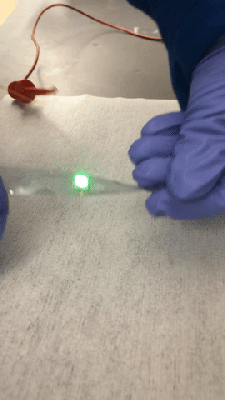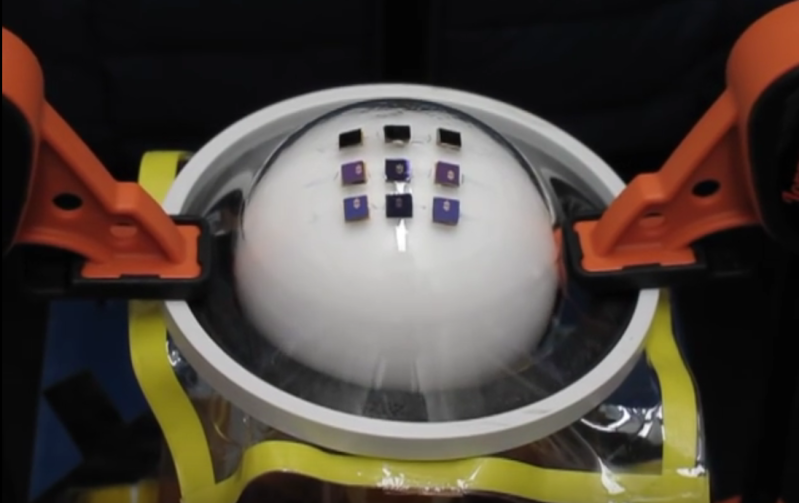The biggest hurdle to great advances in wearable technology is the human body itself. For starters, there isn’t a single straight line on the thing. Add in all the flexing and sweating, and you have a pretty difficult platform for  innovation. Well, times are changing for wearables. While there is no stock answer, there are some answers in soup stock.
innovation. Well, times are changing for wearables. While there is no stock answer, there are some answers in soup stock.
A group of scientists at Stanford University’s Bao Lab have created a whisper thin co-polymer with great conductivity. That’s right, they put two different kinds of insulators together and created a conductor. The only trouble was that the resulting material was quite rigid. With the help of some fancy x-ray equipment, they discovered that adding a molecule found in standard industrial soup thickeners stops the crystallization process of the polymers, leaving them flexible and stretchy. Get this: the material conducts even better when stretched.
The scientists have used the material to make both simple, transparent electrodes as well as entire flexible transistor arrays with an inkjet printer. They hope to influence next generation wearable technology for everything from smart clothing to medical devices. Who knows, maybe they can team up with the University of Rochester and create a conducting co-polymer that can also shape-shift. Check out a brief demonstration after the break.















“Get this: the material conducts even better when stretched.” Looks like it may have some interesting strain gauge uses too…
Question is, how long will this take to get to market? Who will obtain the patent and manufacture it, and for what purpose?
“how long will this take to get to market?”
Depends on the person who is first able to mass-produce it, in shapes that customers want.
“Who will obtain the patent”
Stanford University
“and manufacture it”
The person who is first to be able to mass-produce it, in shapes that customers want.
“and for what purpose”
To make a good living and secure the future of his offspring a few generations down the line.
It’s really that simple.
Yah, make a gimp suit out of it, you might have a full body VR controller….
They’ve invented the worlds worst circuit trace.
Low current per surface area
high impedance
resistance changes with movement
low resolution process
The additive hardens with prolonged UV exposure. Wonder how that effects the traces.
All of this is true in a traditional sense and in this application. However, modern micro-controllers have an IO input impedance of several meg-ohms so this is quite usable technology for sensors and the like.
‘Wearables? That is so twentieth century.’ Well, maybe. Think a covering skin for robots. The entire surface a force sensor. Also for prosthetics. I’m convinced I can make such a material with my openespin project, but I’m a long way from proving it. As for CRISPR, such promise in such a short period of time is impressive. I just hope it gets to live long enough to fulfill it’s promise before some kook somewhere does something stupid with it. With the kind of power it has I hope someone’s thinking of what happens if someone goes to the dark side…
For a serious read on limb regeneration, check out the book The Body Electric by Dr. Robert O’Becker and Gary Selden : https://en.wikipedia.org/wiki/The_Body_Electric_(book)
What? No straight lines on the human body? Apparently I am not human because I have a very long, very straight line on my body!
Now now, no reason to get excited.
So what’s the additive? Neither the linked article, nor the source, say.
From the comments section, from somebody named Tom:
“Bis(trifluoromethane) sulfonimide lithium salt
It isn’t an ingredient in soup (the article title was click-bait), it is a compound that they (Standford) say is “a molecule similar to the sort of additives used to thicken soups in industrial kitchens.” This particular molecule is definitely not something you want as an actual ingredient in your soup as it is a highly toxic substance usually used in Lithium batteries..”
I don’t know what that is, or even if the above statement is accurate. But nothing from soup.